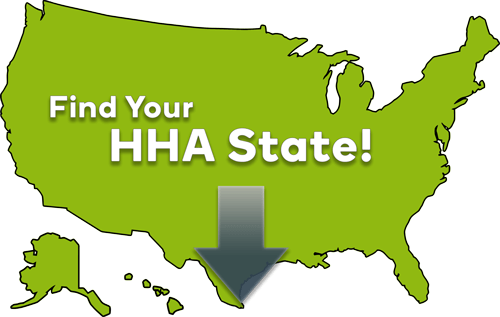Navigating Home Health Aide Regulations Across State Lines
Home Health Aides (HHAs) serve a vital role in the healthcare system, providing care and support to the elderly, disabled, and chronically ill in their homes, facilitating a more comfortable and independent lifestyle for their clients. However, the rules and regulations governing the certification and practice of HHAs can vary significantly from one state to another, leading to a complex landscape for both aspiring and practicing HHAs to navigate.
The regulations for HHAs are particularly important due to the intimate, personal care they provide. This variability in state rules can profoundly affect training, scope of practice, and ultimately, the quality of care provided. Therefore, understanding these differences is essential for HHAs who work in or plan to move to another state.

State-Specific Regulations and Their Importance
The reason for these regulatory differences often lies in the distinct health needs, demographics, and legislative preferences within each state. For example, states with older populations may have stricter regulations to ensure a higher quality of care for this vulnerable group. These state-specific regulations have a direct impact on the requirements necessary to become an HHA, including the extent and content of training and the process of certification.
States may set their own standards due to specific public health concerns, availability of training resources, or historical practices. Understanding these regulations is crucial for those looking to pursue a career as an HHA, as they directly inform the requisite levels of education and hands-on experience.
Understanding Federal vs. State Regulations
Federal standards serve as a baseline for HHA qualifications, ensuring a minimum level of competency and safety in home care services across the nation. However, individual states often build upon these federal guidelines to better suit their local needs and may have additional requirements that exceed the national baseline. These can include longer training hours, additional coursework, or a state-specific certification exam.
By comparing federal home health aide qualifications with those at the state level, HHAs and employers alike can ensure that they are meeting or exceeding the necessary standards in their practice.
Minimum Requirements for HHAs Across Different States
It’s critical for HHAs to familiarize themselves with the minimum requirements in the state where they wish to work. Before committing to a training program, knowing which certifications are recognized and what additional qualifications may be needed can save time and resources in the long run.
States such as California and Florida have unique requirements that differ from many other states. These can include different types of background checks, specific types of in-service education, and other mandates that may not be commonly found elsewhere.
Diving Into State Regulations: A Closer Look
A closer examination of a few states with unique HHA regulations reveals the diversity in how each manages its health aide workforce. Some real-life examples include:
- New York: Requires HHAs to complete more extensive training hours than the federal standard.
- California: Mandates HHAs to undergo additional training in mental health and developmental disabilities.
- Florida: Has its own written and skills evaluation that HHAs must pass to work in the state.
Here’s a table summarizing key differences in these state regulations:
| State | Training Hours | Additional Requirements | Examination Process |
|---|---|---|---|
| New York | High | Specific curriculum not seen elsewhere | State evaluation required |
| California | Moderate | Focus on mental health and disabilities | Combines federal and state tests |
| Florida | Moderate | – | Unique state evaluation |
Training Requirements by State
Training requirements can range from the federal minimum of 75 hours to well over 100, depending on the state. In addition to variations in the number of hours, states may also stipulate what types of training are necessary, such as classroom education versus practical, hands-on experience.
Here is a selection of examples that show this diversity:
- Texas: 75 hours total, with at least 16 hours of clinical training.
- Ohio: At least 75 hours of training, including 16 hours supervised practical.
- Minnesota: Requires 175 hours of training, significantly higher than federal standards.
Adapting to State-Specific Training Needs
For HHAs who are considering a move or are looking to work across state lines, it is important to adapt to new training environments. Here are some strategies to consider:
- Research the new state’s specific requirements thoroughly before moving.
- Contact the state’s health department or a local HHA school for guidance.
- If possible, complete additional training hours in your current state that might transfer over.
Certification Dilemmas: State vs. National Certification
Understanding what HHA certification entails is crucial when considering where to become certified. Certification requirements can include completing a training program, passing a competency evaluation, and maintaining ongoing education credits. Reading up on HHA certification facts can help clarify this process.
For HHAs, the decision to pursue state certification or a nationally recognized certification can affect job prospects, potential for interstate work, and professional development opportunities.
Comparing Certification Processes Across States
Each state’s certification process has its peculiarities. For example:
| State | Certification Requirements | Exam Type |
|---|---|---|
| Texas | Completion of Texas-approved training program | State competency exam |
| Ohio | Finish an Ohio Department of Health-approved course | State test |
| Minnesota | 175 hours of state-mandated training | Written and skills exams |
These differences highlight the importance for HHAs to carefully weigh their options depending on where they plan to build their careers.
Conclusion: Navigating the Patchwork
In conclusion, while the variability in home health aide regulations presents a complex patchwork for professionals to navigate, understanding these differences is critical. A clear grasp of state-specific standards, training, and certification processes not only ensures compliance but also promotes career advancement in the field of home health care.
Where to Find More Information
If you’re seeking more detailed information on HHA regulations, consider in-depth resources such as state health department websites, professional home health aide organizations, and trusted online guides. For personalized advice, it’s often helpful to consult directly with healthcare professionals or educational institutions specialized in home health aide training.

Key Takeaways
Key Takeaways from “Navigating Home Health Aide Regulations Across State Lines”
| Key Takeaway | Details |
|---|---|
| State Variability | Home Health Aide (HHA) regulations differ by state due to various factors such as demographics and health needs. Understanding local regulations is essential for HHAs working or moving interstate. |
| Federal vs. State Standards | Federal regulations set the baseline for HHA qualifications, but many states have additional requirements that surpass federal guidelines. |
| Minimum State Requirements | States like California and Florida have unique HHA requirements; it’s important for HHAs to know state-specific standards before training or working. |
| State Training Specifics | Training hours and content vary; some states require more hours or specific types of training besides the federal minimum. |
| Adapting to New States | HHAs moving across state lines should thoroughly research state requirements, seek guidance from health departments or schools, and complete additional training if necessary. |
| Certification Choices | HHAs must decide between state certification and national certification, affecting job opportunities and professional development. |
| Certification Processes | The certification process can vary significantly between states, making it important for HHAs to understand these differences for career planning. |
| Professional Resources | For more detailed information on HHA regulations, resources like state health department websites and professional organizations are invaluable. |
Understanding these key aspects helps HHAs successfully navigate the complex regulatory environment and maintain compliance while advancing their careers in the caregiving field.



